12 tips for staying healthy and avoiding illness on a plane
Signing up for credit cards through partner links earns us a commission. Terms apply to the offers listed on this page. Here’s our full advertising policy: How we make money.
Update: One or more card offers in this post are no longer available. Check our Hot Deals for the latest offers.
Since the coronavirus outbreak, flyers are more and more concerned about protecting themselves while traveling. The U.S. government has gone as far as declaring the virus a public health emergency, changing the entry policy for those traveling from numerous countries, and airlines have canceled a vast majority of flights. Between that and the usual peak of cold and flu season, it’s especially important to take steps to minimize your risk of getting sick.
For more travel tips and news, including how to book epic round-the-flights with miles, sign up for our daily newsletter.
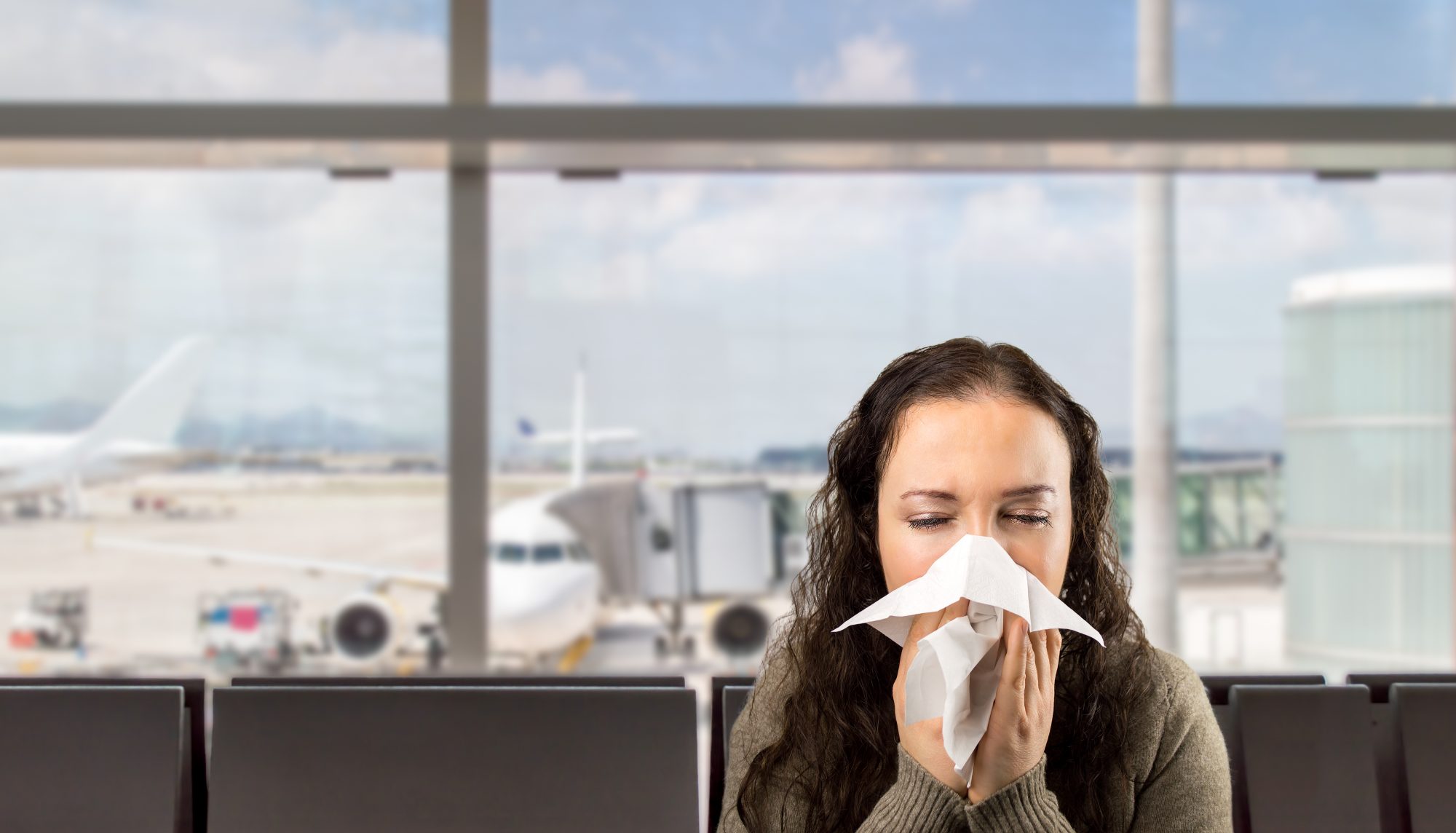
Plan ahead for your next flight by understanding what causes illnesses to spread on planes and how to avoid them.
Why we get sick on airplanes
Airplanes are the nearly perfect environments for getting sick. First of all, they are enclosed and contained spaces where people from all over the world are together for set — sometimes very long! — periods of time.
A University of Alabama study found that some germs can stay up to seven days on a plane. Avoiding contact with people around you is not enough, because there is a week of history piled up on your seat.
If that weren’t enough, factor in reduced oxygen and humidity from being at higher altitude. Even with pressurized cabins the atmosphere in a plane can cause dehydration. This, in turn, dries up the mucous membranes in our throat and nose that normally protect us from over 99% of the diseases we encounter in a normal day.
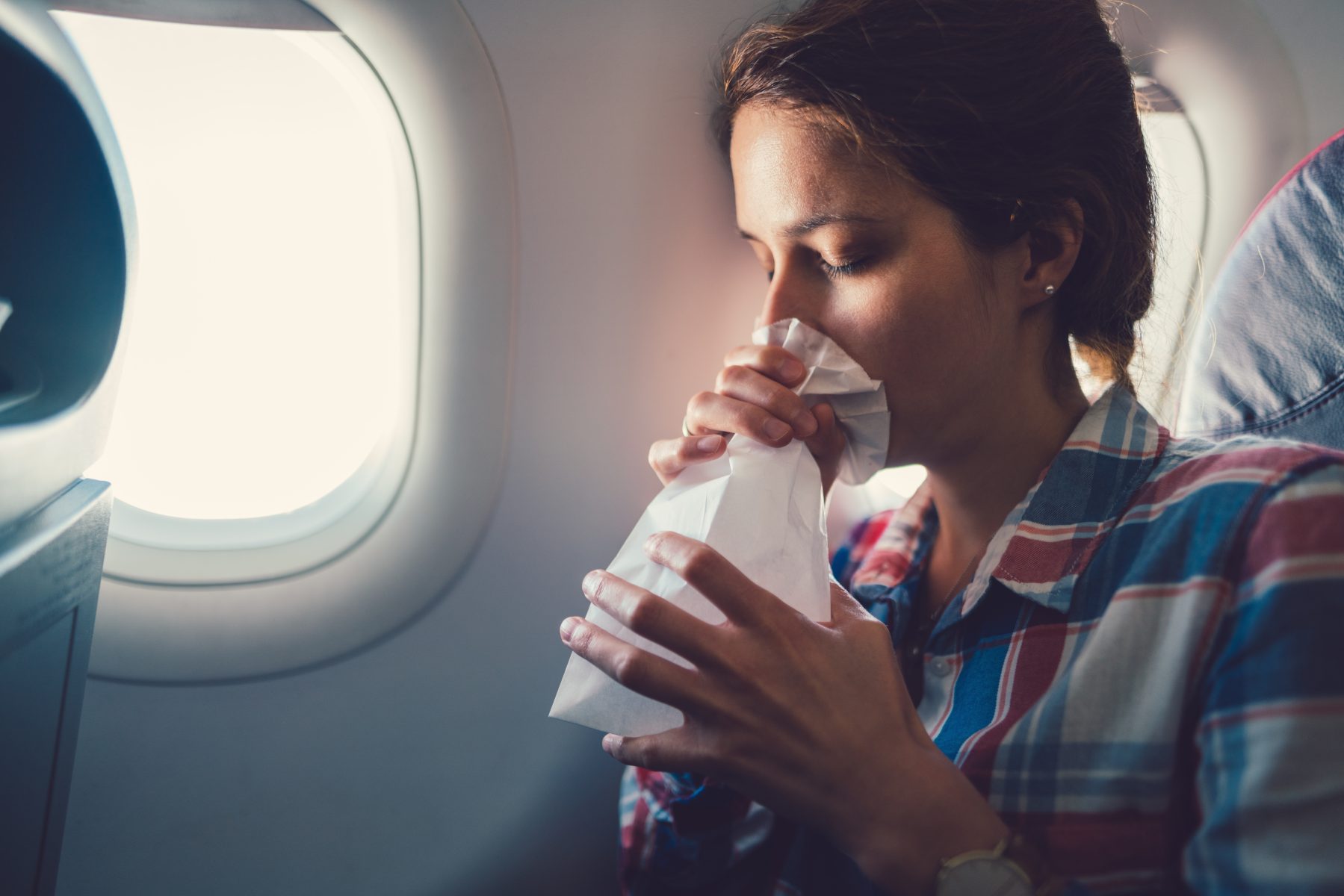
Airplanes are common places that travelers end up catching a cold or flu. But following these tips should help keep you healthy on your next flight–even more important in light of the COVID-19 outbreak. (Photo by martin-dm/iStock)
New airline regulations regarding temperature checks, mask-wearing, and social distancing (including many airlines still blocking middle seats) have certainly helped with avoiding getting sick. But now more than ever, travelers should be taking proactive measures to protect their health and safety while flying.
Here are some tips for your next flight:
Wear a mask for the duration of your air travel experience
For some folks, this means that you should be masked up from the second you leave your house (before getting in an uber) until you arrive at your destination. Most airports and airlines have mandated mask-wearing, but there are still some technical exceptions (such as when eating).
If at all possible, leave your mask on for the duration of your flight and your time in the airport. Not only will you prevent the (possible) transmission of COVID-19, you will also keep the odds low that you contract any other cold or flu-like viruses.
Keep your hands (and distance) to yourself
In addition to mask-wearing, we recommend that you take social distance precautions seriously. It can be difficult to keep a healthy, safe distance from other travelers (recommendation is still 6+ feet between individuals), but try to separate whenever possible.
Airports are sometimes tricky due to dense lines and lots of travelers, but feel free to wait at a distance, stand at a distance, and even talk at a distance (to other travelers or airline staff) in order to abide by distancing protocols.
Get plenty of rest before your flight
As soon as you step on that plane, your body is about to endure a gauntlet of germs from all over the world. You need to make sure it is in its best condition.
Getting plenty of sleep before your flight is one of the best things you can do to make sure your immune system is performing at its peak. Try to get a solid seven to eight hours of sleep the night before.
Eat well
I’m generally a very healthy eater at home, but because healthy eating is so hard during long travel, I often just admit defeat and enjoy a few days of unhealthy food while I fly. Unfortunately, this is the worst thing you can do for your body. As with sleep, what you eat will have a huge impact on the strength of your immune system.
This tip is even more important for folks who generally are very healthy eaters. A switch to greasy foods and sugar can have a much more dramatic impact on your immune system if it is used to healthy proteins and vegetables on a daily basis and then is deprived of them without warning.
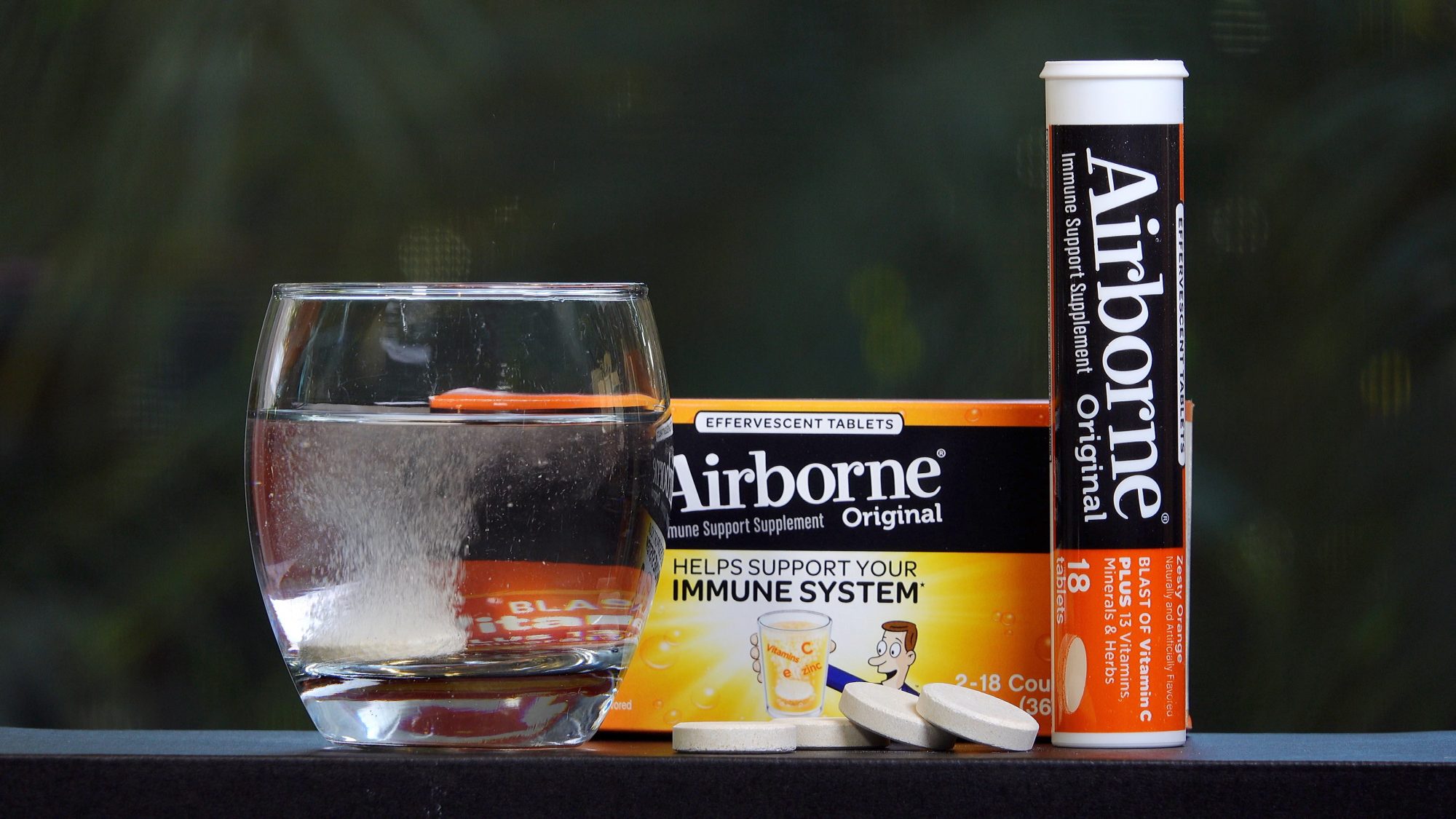
Avoid salty foods as they can speed up dehydration. I also take Airborne (or Emergen-C) once a day for two to three days leading up to my flight and a few days afterward. These products provide a massive injection of vitamin C, among other vitamins, designed to give your immune system a boost. The science on these supplements is often debated, but in my opinion, it definitely doesn’t hurt anything to take them.
Bring your own (healthy) food
In light of the COVID-19 pandemic, many airlines have drastically reduced or altogether eliminated food service. This is both to reduce contact as well as simplify workflows and avoid unnecessary interactions between travelers and airline employees.
As a result, you should expect to be on your own when it comes to saying full. I recommend you bring healthy, simple snacks that can be easily accessed if you get hungry during your travel day.
Even better, I recommend that you try to eat before and after your flying journey and avoid eating during travel at all. This isn’t always possible, but avoiding eating and leaving your mask (or other face covering) on for the duration of your travel will be the safest option and the best chance of keeping you healthy.
Use sanitizing wipes in the restroom, tray table, seat belts, and armrests
Remember that some germs can last for up to seven days on a flight, and COVID-19 transmission is still not fully understood. Despite increased airline cleaning protocols, there are likely still germs on your seat, seatbelt, tray table, armrests, overhead lights, or any other part of the airplane that you or other travelers might touch.
A package of sanitizing wipes costs only a few dollars at the drug or grocery store. You can even find travel sizes that easily slip into a pocket in your purse or backpack. This is a great investment in your health and one we recommend you not fly without.
Remember to wipe down:
- Armrests: Shared by everyone, but easy to clean if you have your wipes
- Seat belts and seat buckles: Everyone touches these at least twice per flight, often more
- Seat pocket: Wipe it down, but it is best not to even use this. (More on that later.)
- Tray table: Considered the most germ-infested part of the whole plane. It has up to eight times more germs and bacteria than the flush button in the airplane bathroom
- Touchscreen entertainment center: These are frequently handled and rarely cleaned. They are the first thing most people handle after returning from the restroom (yes, even before the seatbelt, surprisingly). Give it a solid wipe down and/or avoid entirely
Also, if you ever have to go to the restroom, remember to bring your pack of wipes into the restroom to wipe down the seat, flush button, and sink.
Bring hand sanitizer and use it often
A small bottle of hand sanitizer can be purchased at home for $1 to $2. Make sure the bottle is 3.4 ounces or less so that you can bring it in your carry-on.
Use it on your hands frequently throughout your flight, since there is no knowing when you have collected something on your hands.

The CDC recommends a hand sanitizer that contains at least 60% alcohol. Check the back of the bottle under active ingredients to make sure yours qualifies.
Stay hydrated and bring your own bottle
One of the most important things you can do to stay healthy during a flight is staying hydrated. This will allow your body’s natural fighting mechanisms to work properly and keep your mucous membranes in your throat and nasal passengers from drying out.
Try to drink at least eight ounces of water every one hour of flight. This is far more than you probably drink at home, but is important because of the increased speed of dehydration during flight.
The easiest thing to do is to bring your own reusable bottle rather than buying a bottle of water from the Hudson News before your flight.
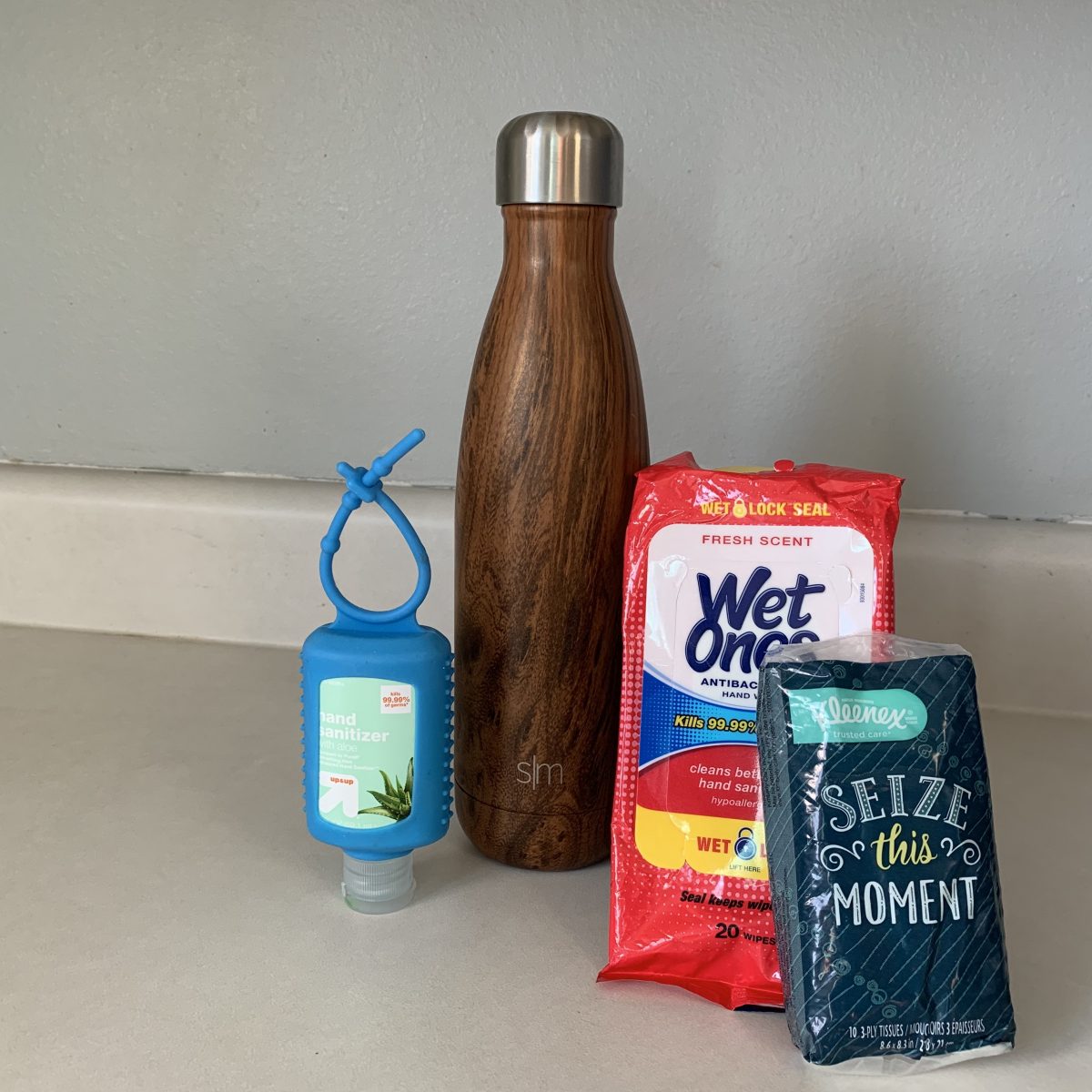
Most airports now have water bottle filling stations where you can fill up your bottle for free. Not only is this better for the environment, but you are more likely to drink more water if you don’t have to pay $3 a bottle for it. Fill it up before your plane boards so you have a full bottle before takeoff. Then you won’t need to ask a flight attendant during the flight for water.
On long international flights, I have also found the bottle useful in getting more water. I usually take my bottle to the galley at the back of the plane and ask if they can fill up my bottle. This is far easier than getting a 3-ounce cup of water 100 times during a flight.
Note: Some airports have temporarily closed refillable water stations and drinking fountains, and some airlines are not accommodating multiple requests for water inflight. Keep these in mind and consider paying for a water bottle in the airport before your flight departs.
Choose your seat carefully
Not all seats are equal when it comes to staying healthy. Window seats actually have significantly fewer germs than those in the aisles.
It is also good to choose a seat away from the lavatories if possible. Seats near the bathrooms tend to have lots of people passing and crowding around them. The folks spending the most time in the bathroom might already be the sick ones on the plane, and so you are more likely to encounter their germs if they are standing next to you while waiting for a bathroom to open up.
A study published in Clinical Infectious Diseases analyzed a flight from Boston to Los Angeles that had to make an emergency landing after a norovirus outbreak on the plane caused vomiting and diarrhea among many passengers on board shortly after takeoff. The study found no link between using the bathroom and getting sick with norovirus, but did find that passengers in the aisle seats were the most likely to have contracted the norovirus, even if they never used the bathroom or left their seats.
Other studies concerning the patterns of airflow on a plane have confirmed similar findings. Those sitting in the aisles will encounter several times as many germs as those sitting in the window seats.
Avoid touching your face
While most people think you get sick from germs entering your mouth, you are actually far more likely to get sick from germs entering your eyes and nose. This has been said over and over again since the beginning of COVID-19, but it is worth repeating and re-emphasizing.
Avoid putting your hands on your face or rubbing your eyes. If you must (such as people who have contacts), then just remember to use hand sanitizer right before you do it.
Keeping your mask or facial covering in place can also be a great deterrent from touching your face and eyes. Remember that your face mask is there to protect you from others AND from yourself — so no touching your face!

If you use a sleep mask, make sure you are careful where you put it. First of all, bring your own (don’t use an airline’s). Second of all, keep it in your own carry-on bag when not in use. Don’t set it down on the potentially dirty seat or tray table between uses.
Skip the adult beverages
Drinking alcohol during a flight can further speed up the process of dehydration that has already started. With the lower levels of oxygen in your brain, the effects of alcohol are greatly increased, and your liver will begin working harder to process the toxins in your system. All of this further takes strength away from your immune system, making you more likely to contract something.
Note: Many airlines have stopped serving alcohol altogether since the beginning of COVID-19. Although some airlines are still serving canned beer or wine, consider skipping booze altogether for the near future.
I rarely drink at home. But for some reason when I fly, I always find myself craving a beer or gin and tonic. It might have something to do with me wanting to get the most from my elite status perks, which often include free alcohol on flights, but it is best to just pass on the alcohol.
Coffee is another drink that is best skipped over because it speeds up dehydration. For a healthier option, try drinking tea instead. If you turn your nose up at most airline tea, which usually consists of Lipton black tea and maybe a no-name herbal variety, you can always bring your own bag of tea and just ask for hot water on the flight.
Bring your own entertainment (And don’t even think about touching that seat pocket)
The seat pocket has been found to contain nearly the same amount of bacteria as the tray table (which is the worst area on the whole plane). But the difference is that your sanitizing wipes are relatively ineffective at disinfecting the seat pocket fabric.
Flight attendants can attest that people use these pockets for everything from dirty tissues to used diapers (yes… really!). Most people treat this pocket like a trash can. For these reasons, health experts agree that the best bet is to simply never touch the seat pocket.
View this post on Instagram
Sì, è un pannolino sporco #passengershaming #mammerispettose #fcopax #cabincrewlife ??✈️
A post shared by Marti?? (@asco_m) on Mar 22, 2015 at 8:50am PDT
And while I know you want to buy the latest hot dog roller from Skymall, it’s better to simply forget that the in-flight magazines exist. With hundreds of pages and tons of surface area to touch, there is no saying how many germs exist on these magazines. They are never cleaned, except when they are replaced once per quarter. Imagine 90 days worth of strangers touching the magazine the next time you go to grab it and you might think twice about how badly you need that Skymall gadget.
The touchscreen entertainment centers are also riddled with germs because they often get more human interaction than anything else on the plane. Children love to rub their nose and then wipe their fingers around the screen. Adults sneeze directly on these areas, which have cracks and crevices that can hold germs for days or weeks.
Try to just bring your own entertainment. I bring my iPad for movies, my Nintendo Switch for playing games and my Kindle for reading books. I never get bored on airplanes, despite never touching those nasty entertainment devices.
Don’t forget about travel insurance
One of the best ways you can protect yourself from the unexpected is to use one of the top credit cards with travel insurance to book your travel.
Many of the top cards for travel insurance, like the Chase Sapphire Reserve®, cover things like any sickness experienced by you or a travel companion which prevents you from going on the trip.
Credit card insurance doesn’t reliably cover virus outbreaks. But thankfully, and especially during situations like the coronavirus outbreak, airlines and hotels are usually very helpful in accommodating travelers with free changes and cancellations.
What are the essentials to bring
Mask
If you’re going to fly in 2020, you need a mask–period. Masks are now mandated in (nearly) all US airports and all US airlines are now requiring travelers to wear masks while onboard. Don’t forget to wear a mask, and bring an extra (or two) in case yours malfunctions or gets dirty.
Hand sanitizer
Hand sanitizer is prevalent in airports, but you should have some of your own handy as well. Use it after going through TSA security, after touching any handles or doorknobs, and after buckling up to ensure your hands are germ-free.
Sanitizing wipes
In addition to hand sanitizer, bring sanitizing wipes to clean any surfaces you have to touch. I like to wipe down my seat, seatbelt, tray table, and armrests before settling in to get my personal space as clean as possible before departure.
Snacks, water, and entertainment
Bring everything you’ll need to be content for the duration of your flight, including water, snacks, and something to do. With reduced onboard service, be sure to bring enough water and snacks to hold you off for your entire travel journey!
Bottom line
Airplanes are a perfect cocktail for getting sick–and we’re especially wary of air travel with the state of increased COVID-19 cases. There is no foolproof way of avoiding illness (other than staying home), but you can help yourself (and others) and prevent your odds of getting sick with some intentional planning and basic guidelines.
You can stay healthy by following these 12 tips during your next flight:
- Wear a mask for the duration of your flight
- Keep your hands (and distance) to yourself
- Get plenty of rest before your flight
- Eat well (take vitamin supplements to boost the immune system)
- Bring your own healthy food
- Use sanitizing wipes on everything you touch
- Bring hand sanitizer and use it often
- Stay hydrated by bringing your own reusable water bottle
- Choose a window seat (avoid the aisle)
- Avoid touching your face (and be careful with your sleep mask)
- Skip alcohol and coffee
- Bring your own entertainment
Do you have any other tips for staying healthy during a flight?
Want to learn the secrets of super cheap travel using miles and points? Subscribe to our newsletter and we’ll send them to you daily.
Editorial Note: We're the Million Mile Secrets team. And we're proud of our content, opinions and analysis, and of our reader's comments. These haven’t been reviewed, approved or endorsed by any of the airlines, hotels, or credit card issuers which we often write about. And that’s just how we like it! :)
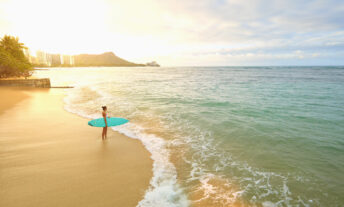

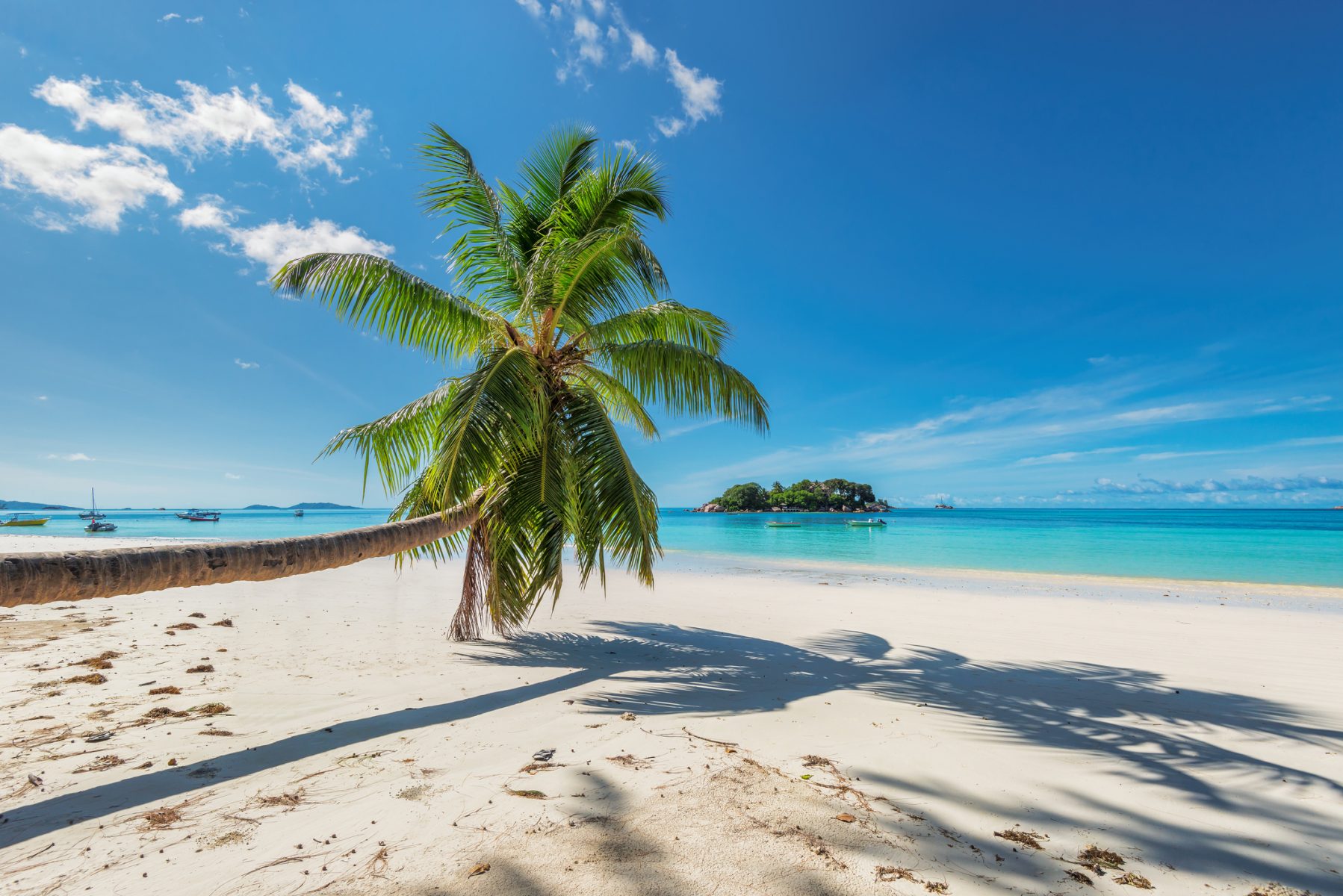



Join the Discussion!